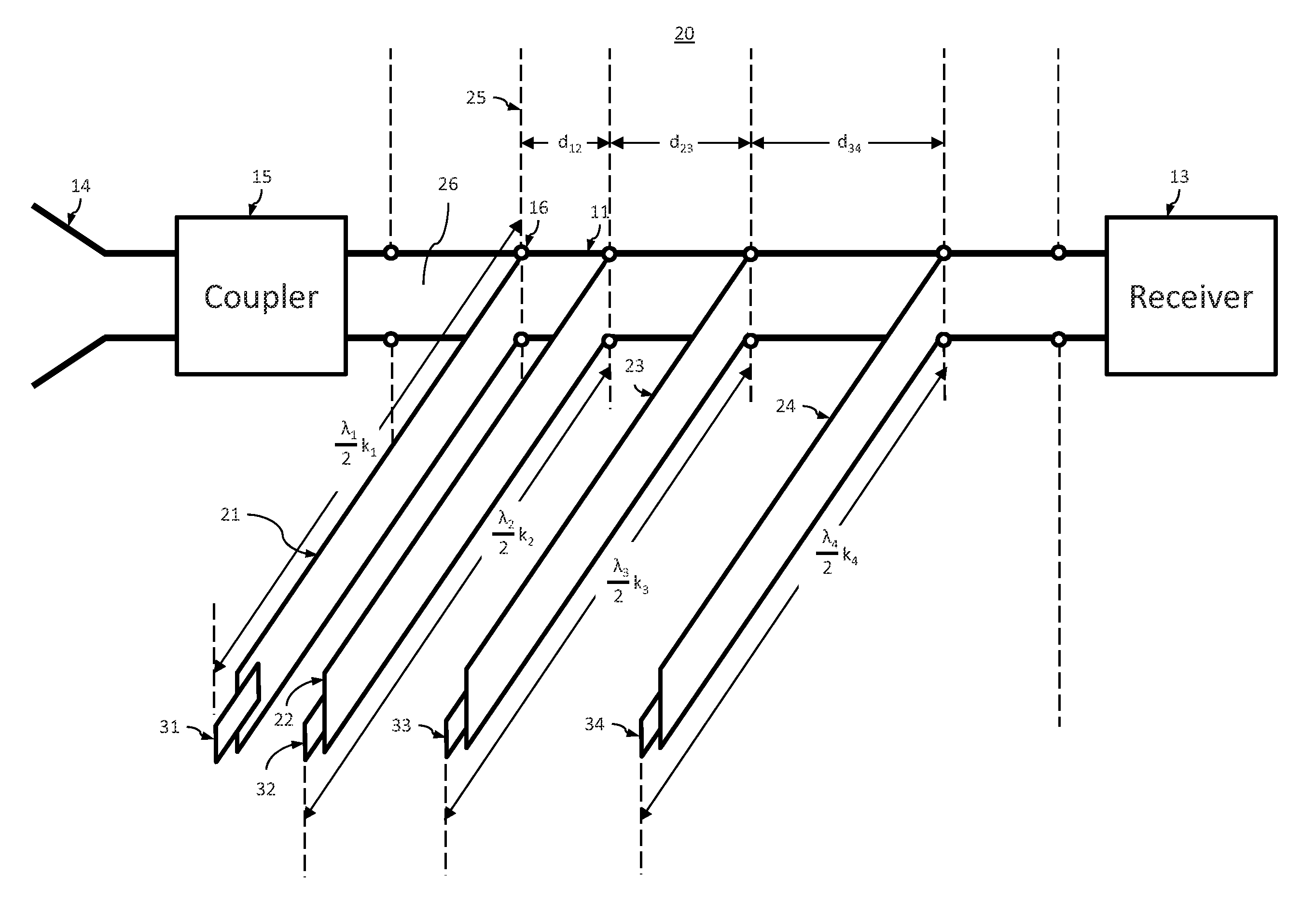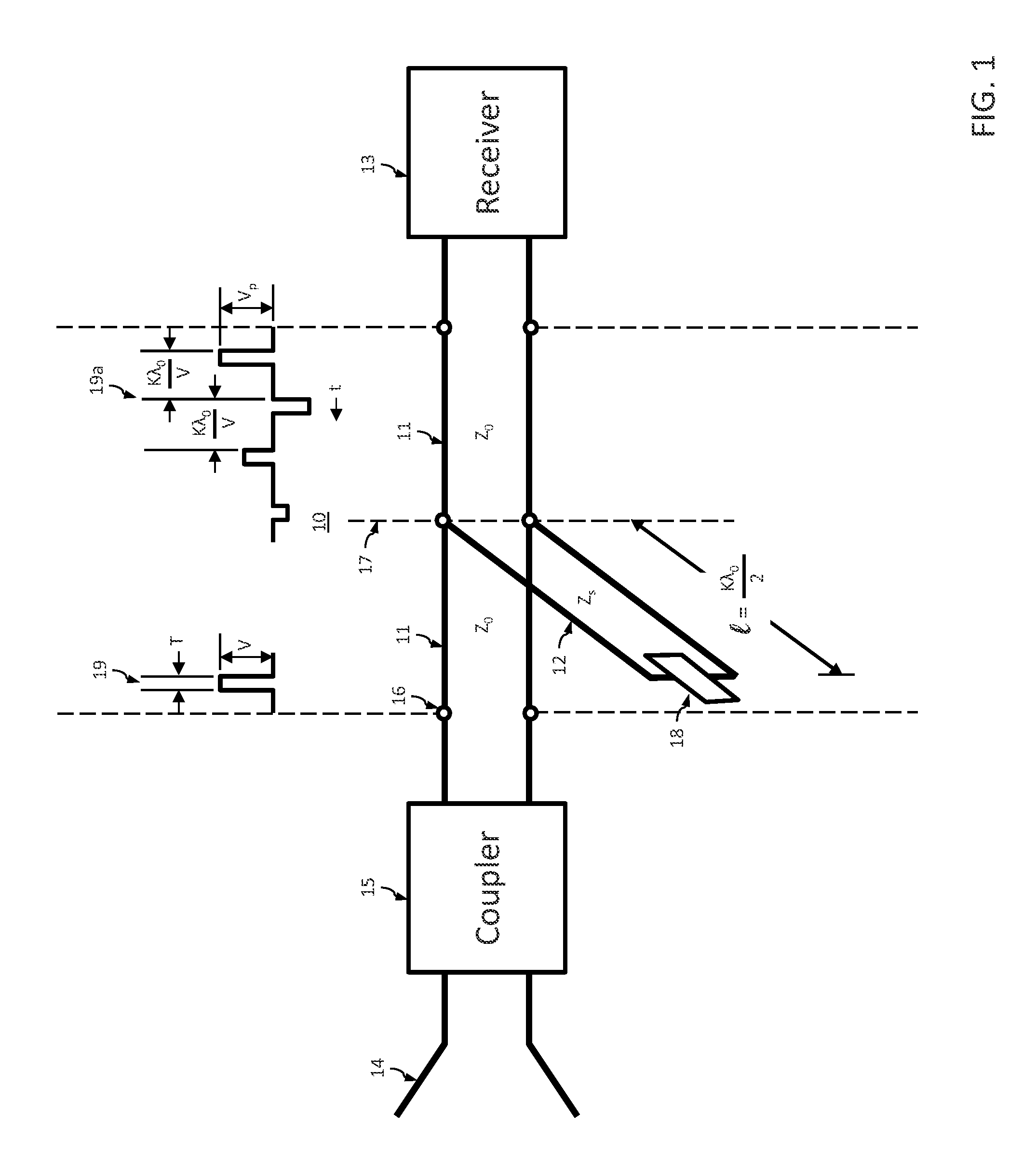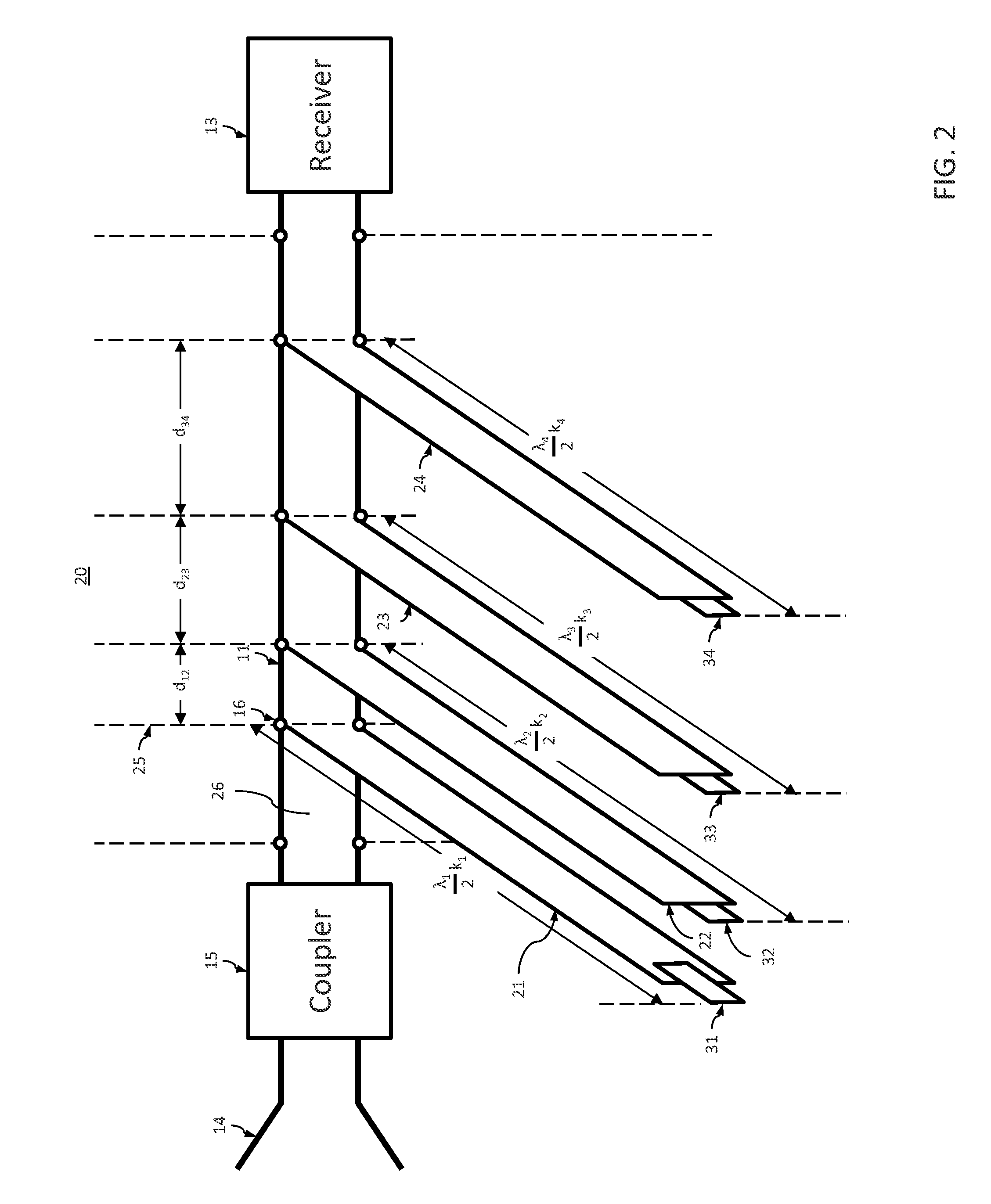Anti-jam apparatus for baseband radar systems
a radar system and anti-jam technology, applied in communication jamming, instruments, measurement devices, etc., can solve the problems of reducing the effectiveness of weapons, insensitive to multiple target deception and broadband noise jammers, and vulnerable to electronic countermeasures (ecm) such as cw or narrow band jammers
- Summary
- Abstract
- Description
- Claims
- Application Information
AI Technical Summary
Benefits of technology
Problems solved by technology
Method used
Image
Examples
Embodiment Construction
[0008]All networks provide transient and steady state responses to applied signals, which together constitute the total response thereto. When a CW signal is initially applied to a quiescent linear, time invariant network, the change from no signal to signal elicits a transient response. This transient response decays to substantial extinction after a time lapse determined by the network parameters, from the initial signal application and the network steady state response is obtained thereafter. A substantially baseband pulse, with a duration in the order of a nanosecond exhibits such a rapid change of state that when it is applied to a network only the transient response is elicited.
[0009]Refer now to FIG. 1, wherein an anti-jam filter 10 it comprising a main transmission line 11, having characteristic impedance zo, and a stub transmission line 12, having characteristic impedance zs, is shown coupled between a baseband receiver 13 and a baseband receiving antenna 14 which may be di...
PUM
 Login to View More
Login to View More Abstract
Description
Claims
Application Information
 Login to View More
Login to View More - R&D
- Intellectual Property
- Life Sciences
- Materials
- Tech Scout
- Unparalleled Data Quality
- Higher Quality Content
- 60% Fewer Hallucinations
Browse by: Latest US Patents, China's latest patents, Technical Efficacy Thesaurus, Application Domain, Technology Topic, Popular Technical Reports.
© 2025 PatSnap. All rights reserved.Legal|Privacy policy|Modern Slavery Act Transparency Statement|Sitemap|About US| Contact US: help@patsnap.com



